Shin Splint Exercises
Medically reviewed by Drugs.com. Last updated on Apr 6, 2025.
What do I need to know about shin split exercises?
Shin splint exercises help treat or prevent shin splints. They also strengthen your leg muscles.
How should I do shin splint exercises?
The following are common shin splint exercises. Your healthcare provider may give you certain exercises to do. Stop if you have pain when you do an exercise.
- Calf stretch: Face a wall. Put 1 leg in front of the other. Stand with your forward leg bent and back leg straight. Gently lean forward toward the wall until you feel your calf stretch in your back leg. Hold for 30 seconds and then relax. Do the calf stretch 3 times on each leg.
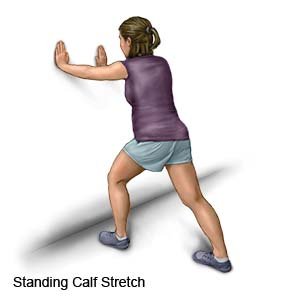
- Toe taps: Stand on a flat surface. Keep your heel on the floor and tap your toes and the ball of your foot for 2 minutes. Change sides and repeat.
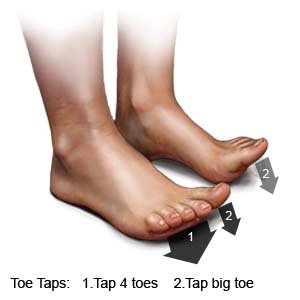
- Ankle alphabet: Sit on a chair so that your feet do not touch the floor. Use your big toe to write each letter of the alphabet. Use only your foot and ankle, and keep your movements small. Do 2 sets.
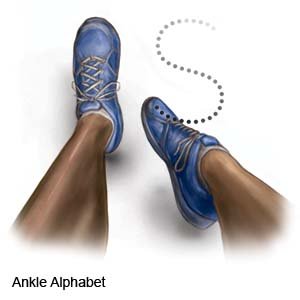
- Heel raise: Stand on the injured leg. Raise your other leg off the ground. Hold onto a railing or wall for balance. Slowly rise up on the toes of your injured leg. Hold for 1 second and then lower your heel. Repeat 10 times.
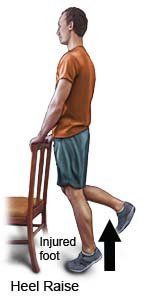
- Chair squats: Stand in front of a chair with your feet shoulder width apart. Slowly lower your buttocks until you barely feel the chair seat, and then stand up. Repeat 20 times.

- Toe curls: Place a towel on the floor. Put your foot flat on the towel. Grab the towel with your toes by curling them around the towel. Lift the towel up with your toes.
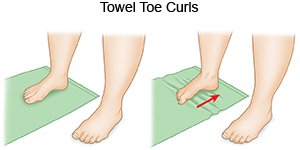
When should I call my doctor?
- Your pain does not go away with treatment, or it gets worse.
- You have pain at rest.
- You have questions or concerns about your condition or care.
Care Agreement
You have the right to help plan your care. Learn about your health condition and how it may be treated. Discuss treatment options with your healthcare providers to decide what care you want to receive. You always have the right to refuse treatment. The above information is an educational aid only. It is not intended as medical advice for individual conditions or treatments. Talk to your doctor, nurse or pharmacist before following any medical regimen to see if it is safe and effective for you.© Copyright Merative 2025 Information is for End User's use only and may not be sold, redistributed or otherwise used for commercial purposes.
Further information
Always consult your healthcare provider to ensure the information displayed on this page applies to your personal circumstances.
